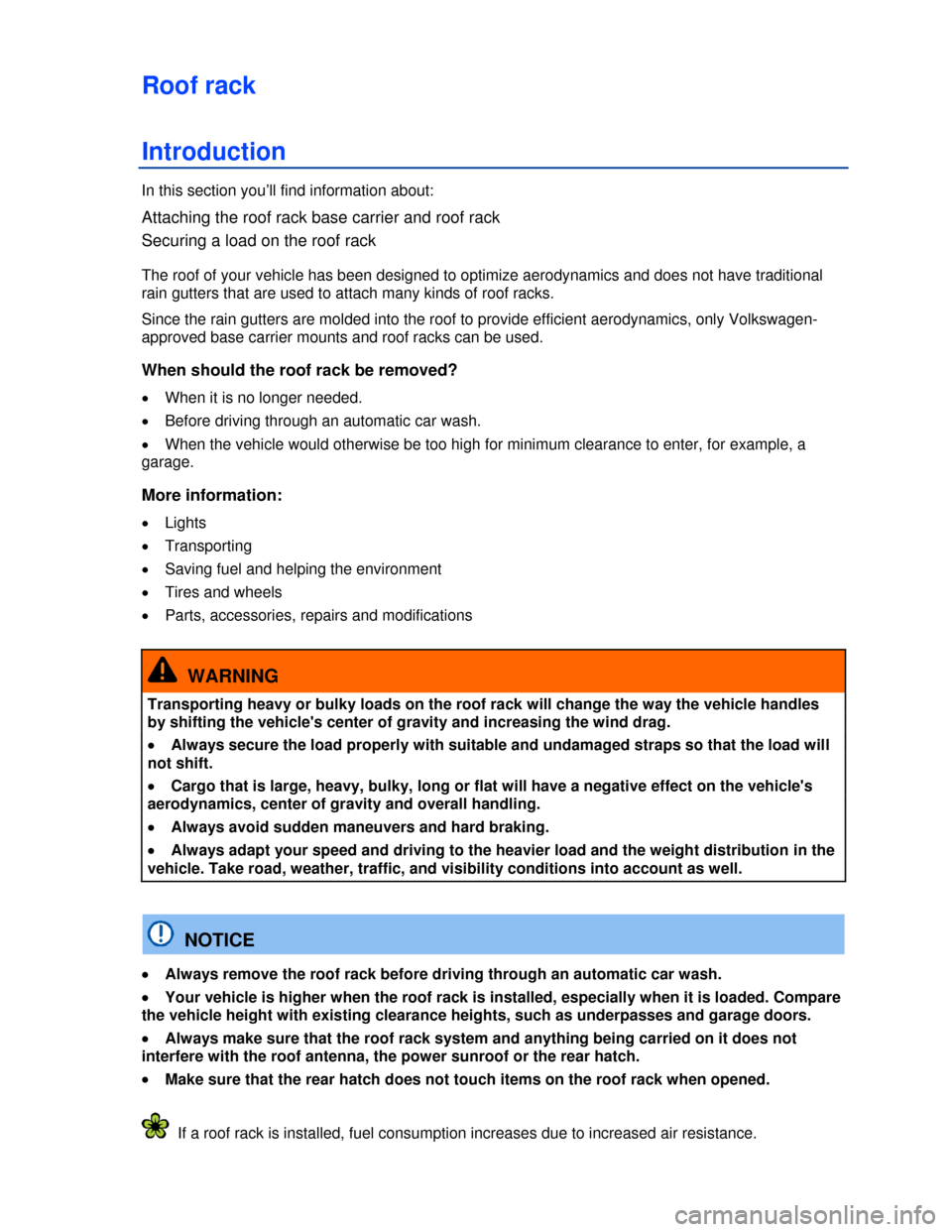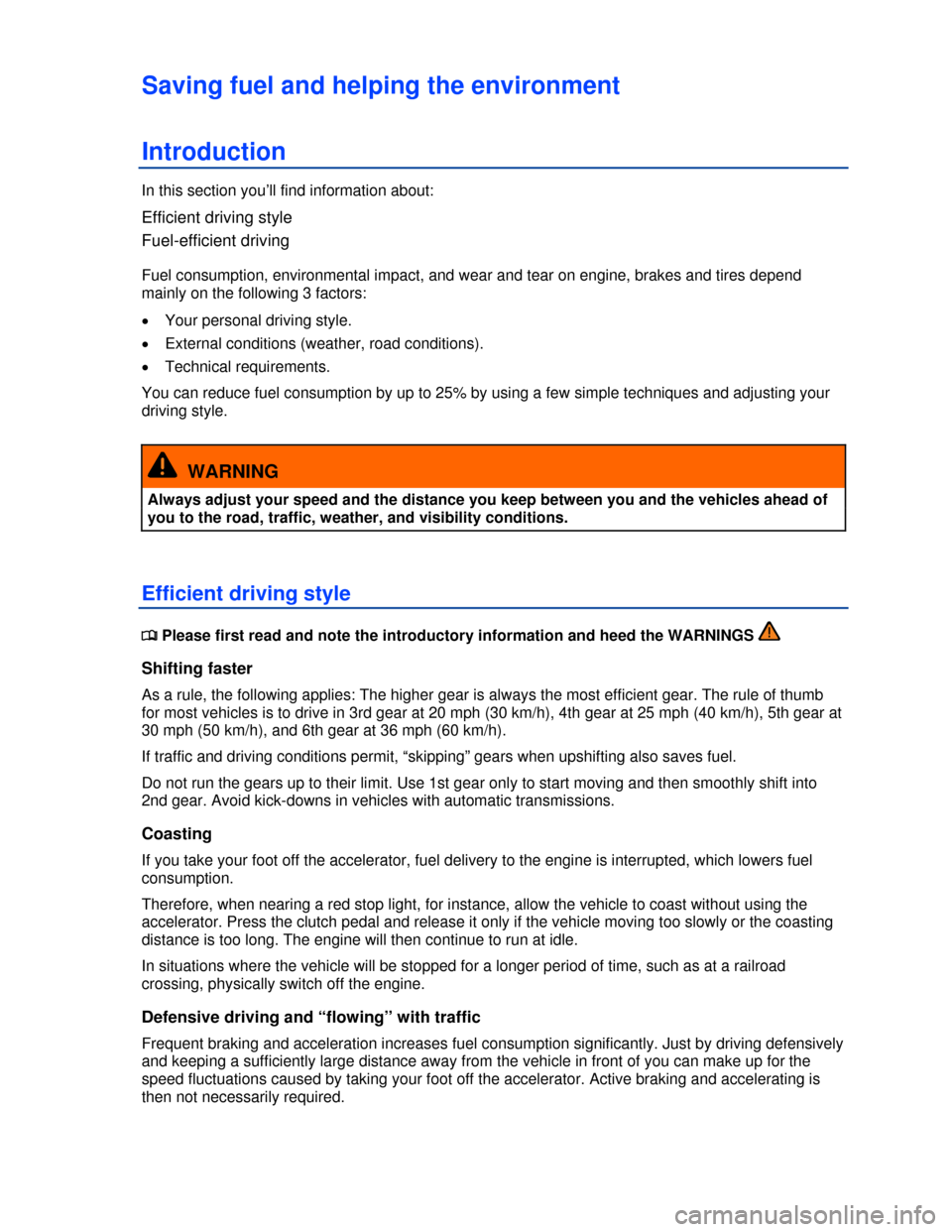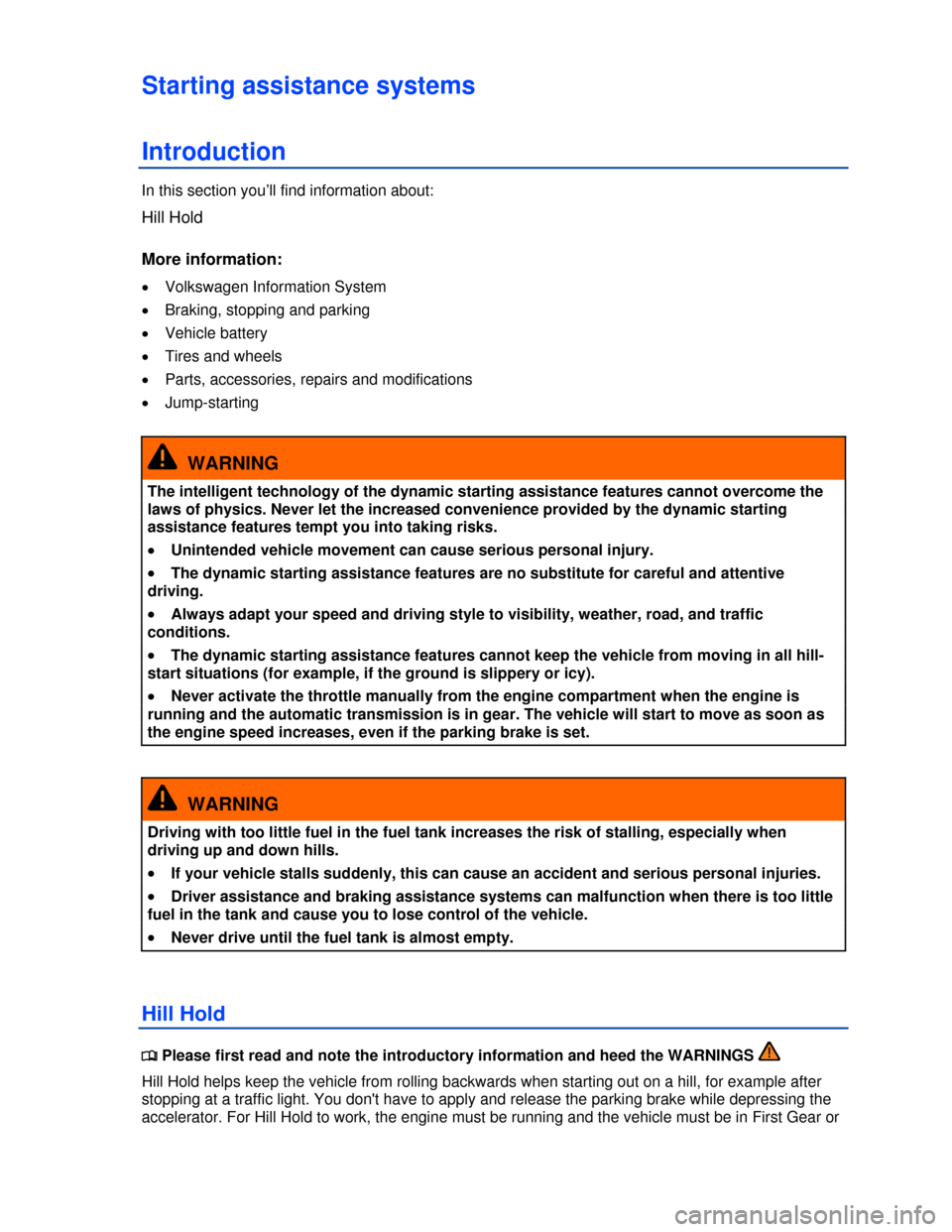2013 VOLKSWAGEN GOLF GTI tires
[x] Cancel search: tiresPage 141 of 319

Luggage compartment
Introduction
In this section you’ll find information about:
Folding the rear seat backrest forward and back into place
Luggage compartment cover
Luggage compartment pass-through
Tie-downs
Shopping bag hooks
Always stow heavy objects in the luggage compartment and make sure that the rear seat backrests
are securely latched in their upright position. Always secure objects to the tie-downs with suitable
straps. Never overload the vehicle. Remember that the vehicle load, as well as how it is distributed,
can affect vehicle handling and braking ⇒ .
More information:
�x Safety belts
�x Airbag system
�x Lights
�x Transporting
�x Trailer towing
�x Tires and wheels
WARNING
An open or unlocked luggage compartment poses special risks for children.
�x Close and lock the rear hatch and all doors when the vehicle is not in use. First, make
certain that no one is left inside.
�x Never leave your vehicle unattended or let children play around the vehicle, especially
with the rear hatch left open. A child could crawl into the vehicle and pull the hatch shut,
becoming trapped and unable to get out. This could cause severe or fatal injuries.
�x A closed vehicle can become very hot or very cold, depending on the season.
Temperatures can quickly reach levels that can cause unconsciousness or death, particularly
to small children.
�x Never let children play in or around the vehicle.
�x Never let anyone ride in the luggage compartment.
Page 150 of 319

Roof rack
Introduction
In this section you’ll find information about:
Attaching the roof rack base carrier and roof rack
Securing a load on the roof rack
The roof of your vehicle has been designed to optimize aerodynamics and does not have traditional
rain gutters that are used to attach many kinds of roof racks.
Since the rain gutters are molded into the roof to provide efficient aerodynamics, only Volkswagen-
approved base carrier mounts and roof racks can be used.
When should the roof rack be removed?
�x When it is no longer needed.
�x Before driving through an automatic car wash.
�x When the vehicle would otherwise be too high for minimum clearance to enter, for example, a
garage.
More information:
�x Lights
�x Transporting
�x Saving fuel and helping the environment
�x Tires and wheels
�x Parts, accessories, repairs and modifications
WARNING
Transporting heavy or bulky loads on the roof rack will change the way the vehicle handles
by shifting the vehicle's center of gravity and increasing the wind drag.
�x Always secure the load properly with suitable and undamaged straps so that the load will
not shift.
�x Cargo that is large, heavy, bulky, long or flat will have a negative effect on the vehicle's
aerodynamics, center of gravity and overall handling.
�x Always avoid sudden maneuvers and hard braking.
�x Always adapt your speed and driving to the heavier load and the weight distribution in the
vehicle. Take road, weather, traffic, and visibility conditions into account as well.
NOTICE
�x Always remove the roof rack before driving through an automatic car wash.
�x Your vehicle is higher when the roof rack is installed, especially when it is loaded. Compare
the vehicle height with existing clearance heights, such as underpasses and garage doors.
�x Always make sure that the roof rack system and anything being carried on it does not
interfere with the roof antenna, the power sunroof or the rear hatch.
�x Make sure that the rear hatch does not touch items on the roof rack when opened.
If a roof rack is installed, fuel consumption increases due to increased air resistance.
Page 153 of 319

Trailer towing
Introduction
In this section you’ll find information about:
Technical requirements
Hitching up and connecting a trailer
Loading the trailer
Driving with a trailer
Ball mount
Retrofitting a trailer hitch
Maximum permissible trailer weight
Obey country-specific requirements about trailer towing and trailer hitches.
Volkswagen does not recommend installing a trailer hitch on your vehicle. Your Volkswagen was
mainly designed for carrying passengers. If you plan to tow a trailer, please remember your vehicle will
be performing a job for which it was not primarily intended. The additional load will affect durability,
handling, fuel economy, and performance, and may require the vehicle to be serviced more often.
Trailer towing not only places more stress on the vehicle, it calls for more concentration from the
driver. Always follow the operating and driving instructions given, and use common sense.
Under winter conditions, install winter tires on the vehicle and the trailer.
Tongue weight
The maximum permissible trailer tongue weight exerted on the ball mount must not exceed 200 lbs
(91 kg).
More information:
�x Power locking and closing system
�x Anti-theft alarm system
�x Lights and vision
�x Braking, stopping, and parking
�x Saving fuel and helping the environment
�x Starting assistance systems
�x Tires and wheels
�x Parts, accessories, repairs and modifications
WARNING
Riding in a trailer is dangerous and may be illegal.
Page 187 of 319

Saving fuel and helping the environment
Introduction
In this section you’ll find information about:
Efficient driving style
Fuel-efficient driving
Fuel consumption, environmental impact, and wear and tear on engine, brakes and tires depend
mainly on the following 3 factors:
�x Your personal driving style.
�x External conditions (weather, road conditions).
�x Technical requirements.
You can reduce fuel consumption by up to 25% by using a few simple techniques and adjusting your
driving style.
WARNING
Always adjust your speed and the distance you keep between you and the vehicles ahead of
you to the road, traffic, weather, and visibility conditions.
Efficient driving style
�
Page 194 of 319

Starting assistance systems
Introduction
In this section you’ll find information about:
Hill Hold
More information:
�x Volkswagen Information System
�x Braking, stopping and parking
�x Vehicle battery
�x Tires and wheels
�x Parts, accessories, repairs and modifications
�x Jump-starting
WARNING
The intelligent technology of the dynamic starting assistance features cannot overcome the
laws of physics. Never let the increased convenience provided by the dynamic starting
assistance features tempt you into taking risks.
�x Unintended vehicle movement can cause serious personal injury.
�x The dynamic starting assistance features are no substitute for careful and attentive
driving.
�x Always adapt your speed and driving style to visibility, weather, road, and traffic
conditions.
�x The dynamic starting assistance features cannot keep the vehicle from moving in all hill-
start situations (for example, if the ground is slippery or icy).
�x Never activate the throttle manually from the engine compartment when the engine is
running and the automatic transmission is in gear. The vehicle will start to move as soon as
the engine speed increases, even if the parking brake is set.
WARNING
Driving with too little fuel in the fuel tank increases the risk of stalling, especially when
driving up and down hills.
�x If your vehicle stalls suddenly, this can cause an accident and serious personal injuries.
�x Driver assistance and braking assistance systems can malfunction when there is too little
fuel in the tank and cause you to lose control of the vehicle.
�x Never drive until the fuel tank is almost empty.
Hill Hold
�
Page 201 of 319

WARNING
Incorrect tire pressures and/or underinflation can cause sudden tire failure, loss of control,
collision, serious personal injury or even death.
�x When the warning symbol appears in the instrument cluster, stop and inspect the tires.
�x Incorrect tire pressure and/or underinflation can cause increased tire wear and can affect
the handling of the vehicle and stopping ability.
�x Incorrect tire pressures and/or underinflation can also lead to sudden tire failure,
including a blowout and sudden deflation, causing loss of vehicle control.
�x The driver is responsible for the correct tire pressures for all tires on the vehicle. The
recommended tire pressure values are listed on a sticker inside the driver door .259.
�x The TPMS can only work correctly when all tires on the vehicle are filled to the correct
cold tire inflation pressure.
�x Using incorrect tire pressure values can cause accidents or other damage. Always inflate
the tires to the correct specified cold tire pressure values for the tires installed on the vehicle.
�x Always maintain correct cold tire inflation pressure so that TPMS can do its job.
�x Always inflate tires to the recommended and correct tire pressure before driving off.
�x Driving with underinflated tires causes them to flex (bend) more, letting them get too hot,
resulting in tread separation, sudden tire failure, and loss of control.
�x Excessive speed and/overloading can cause heat build-up, sudden tire failure and loss of
control.
�x If the tire pressure is too low or too high, the tires will wear prematurely and the vehicle
will not handle well.
�x If the tire is not “flat” and you do not have to change a wheel immediately, drive carefully
and at reduced speed to the nearest service station to check the tire pressure and add air as
required.
�x When replacing tires or wheel rims on vehicles equipped with TPMS always read and heed
the information and all WARNINGS regarding, Tires and wheels.
�x The Tire Pressure Monitoring System must be recalibrated using the SET button whenever
you remove and remount or change any wheel or tire on the vehicle, even if the reinstalled or
replacement wheels and tires are identical to those that were removed and even if the tire
pressure does not change
WARNING
Improper use of the SET button can cause the TPMS to give false warnings or to give no
warning despite dangerously low tire pressure
Underinflation increases fuel consumption and tire wear.
Do not rely solely on the Tire Pressure Monitoring System. Check your tires regularly to make
sure they are properly inflated and have no signs of damage, such as punctures, cuts, cracks, and
blisters. Remove any objects that become embedded in the tire tread but have not penetrated into the
body of tire itself.
When you take delivery of the vehicle, the Tire Pressure Monitoring System is calibrated for the
factory-recommended cold tire inflation pressure for the tires on your vehicle, as shown on the label
inside the driver door
Page 202 of 319

�x The system must be recalibrated using the SET button whenever you remove and remount or
change any wheel or tire on the vehicle, even if the reinstalled or replacement wheels and tires are
identical to those that were removed and even if the tire pressure does not change
�x If you have to adjust the tire pressure on a warm tire, fill the tire with 2.0 - 4.35 psi (20 - 30 kPa)
more than the pressure specified on the tire pressure label inside the driver door
�x If the TPMS determines that the air pressure in at least one tire is too low, carefully check the
pressure in all 4 tires with an accurate tire pressure gauge. Low tire pressure usually cannot be
determined by looking at the tire. This is especially true of low-profile tires.
If you have work done on your wheels or tires, inform the workshop that the vehicle is equipped
with a Tire Pressure Monitoring System (TPMS).
New tires may expand slightly the first time they are driven at high speeds, which can trigger a
tire pressure warning. Remember that tire pressure can only be properly measured when the tire is
“cold”
Only replace old tires with tires that have been approved by Volkswagen for your vehicle type.
Applicable only in the United States
Indicator light (telltale) �
Page 203 of 319

WARNING
Incorrect tire pressures and/or underinflation can cause sudden tire failure, loss of control,
collision, serious personal injury, or even death.
�x When the warning symbol Ç appears in the instrument cluster, stop the vehicle as soon as
it is safe to do so and inspect all tires.
�x Incorrect tire pressure and/or underinflation can cause increased tire wear and can affect
the handling of the vehicle and its stopping ability.
�x Incorrect tire pressure and/or underinflation can also lead to sudden tire failure, including
a blowout and sudden deflation, causing loss of vehicle control.
�x The driver is responsible for the correct tire pressures for all tires on the vehicle. The
recommended tire pressure values are listed on a sticker inside the driver door
�x The TPMS can only work correctly when all tires on the vehicle are filled to the correct
cold tire inflation pressure. Always maintain the correct cold tire inflation pressure so that
TPMS can do its job.
�x Using incorrect tire pressure values can cause accidents or other damage. Check the
pressure in all 4 tires when the tires are still cold. Never reduce air pressure in warm tires to
match cold tire inflation pressure.
�x Always inflate the tires to the correct specified cold tire pressure values for the tires
installed on the vehicle; see the tire inflation pressure label on the driver door jamb .Error!
Bookmark not defined., Tires and wheels.
�x Always inflate tires to the recommended and correct tire pressure before driving off.
�x Driving with underinflated tires causes them to flex (bend) more, letting them get too hot,
which can result in tread separation, sudden tire failure, and loss of control.
�x Excessive speed and/or overloading can cause heat build-up, sudden tire failure, and loss
of control.
�x If the tire pressure is too low or too high, the tires will wear prematurely and the vehicle
will not handle well.
�x If the tire is not “flat” and you do not have to change the tire or wheel immediately, drive at
reduced speed to the nearest service station to check the tire pressure and add air as
required.
�x When replacing tires or wheel rims on vehicles equipped with TPMS, always read and
heed the information and all WARNINGS in the section , Tires and wheels.
�x The Tire Pressure Monitoring System must be recalibrated using the SET button whenever
you remove and remount or change any wheel or tire on the vehicle, even if the reinstalled or
replacement wheels and tires are identical to those that were removed and even if the tire
pressure does not change
WARNING
Improper use of the SET button can cause the TPMS to give false warnings or to give no
warning despite dangerously low tire pressure
WARNING
Failure to heed warning lights and instrument cluster text messages can cause the vehicle to
break down in traffic and result in a collision and serious personal injury.
�x Never ignore warning lights or text WARNINGS.
�x Always stop the vehicle as soon as it is safe to do so.